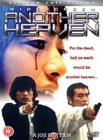![Princess Blade [2001]](/pictures/1006007.jpg) Princess Blade | DVD | (23/09/2002)
from £12.98
| Saving you £2.01 (15.49%)
| RRP
Princess Blade | DVD | (23/09/2002)
from £12.98
| Saving you £2.01 (15.49%)
| RRP Shinsuke Sato's The Princess Blade is, in some respects, a standard Japanese action adventure with a lot of swordplay and repayment of blood debts; but it differs in that it stretches the formula in interesting ways. Its moody angst is turned up to full power and it has a twilit elegiac quality, a sense of the sadness of things, which is at once very Japanese and very stylish. Yukio is one of the assassins of the house of Takemikazuchi, a group of exiled royal guards from a neighbouring kingdom who have created a life in the isolated low-tech kingdom Japan has become in some near future. She is in fact the last of the original Takemikazuchi family, who have gradually been marginalised and murdered. Informed of this and on the run from her fellow swordsmen, she takes refuge with, and falls for, Takashi, an assassin of a more modern kind, an alienated young man whose concern for his retarded sister sits uneasily with his bomb-making. The film moves steadily from explosions of passionate action beautifully choreographed to quiet intense moments of stillness, ending ambiguously on the latter. It is a superior film in its genre because it coherently questions the values and actions it celebrates. --Roz Kaveney
![Tetsuo - The Iron Man [1989]](/pictures/1006110.jpg) Tetsuo - The Iron Man | DVD | (22/04/2002)
from £20.00
| Saving you £-5.01 (N/A%)
| RRP
Tetsuo - The Iron Man | DVD | (22/04/2002)
from £20.00
| Saving you £-5.01 (N/A%)
| RRP In Tetsuo: The Iron Man Shinya Tsukamoto draws on the marriage of flesh and technology that inspires so much of David Cronenberg's work and then twists it into a Manga-influenced cyberpunk vision. A man (Tomoroh Taguchi) awakens from a nightmare in which his body is helplessly fusing with the metal objects around him, only to find it happening to him in real life... or is it? Haunted by memories of a hit and run (eerily prophetic of Cronenberg's Crash), the man knows this ordeal could be a dream, a fantastic form of divine retribution, or perhaps technological mutation born of guilt and rage. Shot in bracing black and white on a small budget, Tsukamoto puts a demented conceptual twist on good old-fashioned stop-motion effects and simple wire work, giving his film the surreal quality of a waking dream with a psychosexual edge (resulting in the film's most disturbing scene). The story ultimately takes on an abstract quality enhanced by the grungy look and increasingly wild images as they take to the streets in a mad chase of technological speed demons. This first entry in his self-titled "Regular Sized Monster Series" was followed by a full-colour sequel, Tetsuo II: The Body Hammer, which trades the muddy experimental atmosphere for a big-budget sheen but can't top the cybershock to the system this movie packs.--Sean Axmaker
![The Geisha House [1999]](/pictures/1005980.jpg) The Geisha House | DVD | (11/11/2002)
from £N/A
| Saving you £N/A (N/A%)
| RRP
The Geisha House | DVD | (11/11/2002)
from £N/A
| Saving you £N/A (N/A%)
| RRP A moving and entrancing exploration of a culture that has fascinated the Western world for centuries, Kinji Fukasaki's Geisha House was released in 1998, presaging a flurry of literature and memoirs that have helped to broaden our understanding of the geisha's role in Japanese society. Set in the late 1950s, when geisha culture was threatened by moral crusades, it tells the story of Omacha (Miyamoto Maki), a young girl who sees the geisha life as a way to lift her poverty-stricken family from their hand-to-mouth existence. Through her eyes, we see the protocols and complex financial relationships which dictate the running of the geisha house. Fukusaki's film is a work of great delicacy with moments of hypnotic beauty, and his tender direction, often touched with a sense of wonder, fills the screen with lovingly constructed scenes. At its heart is the poignant situation of the women who must sacrifice their normal relationships to live an ambiguous life in which they are a key part of society while being kept, for the most part, on its periphery, like perpetual mistresses. On the DVD: Geisha House is presented with subtitles in widescreen anamorphic format. The string-laden Dolby Digital stereo soundtrack is occasionally overpowering. The only extra is a short, text biography of Fukusaki. --Piers Ford
 Another Heaven | DVD | (27/10/2003)
from £7.99
| Saving you £12.00 (150.19%)
| RRP
Another Heaven | DVD | (27/10/2003)
from £7.99
| Saving you £12.00 (150.19%)
| RRP New wave director Joji Iida presents a horrific tale that transcends genres about the basic attraction of evil that lurks within us all. A routine homicide turns into a major investigation for Inspector Hayase. As more and more murders occur with each corpse sickeningly mutilated as a love-token for Hayase the police are left without any clues as to why such diabolical crimes are being commited and more importantly by whom.
 Sabu | DVD | (28/06/2004)
from £N/A
| Saving you £N/A (N/A%)
| RRP
Sabu | DVD | (28/06/2004)
from £N/A
| Saving you £N/A (N/A%)
| RRP A psychological period drama adapted from the classic rites of passage novel by Shuguro Yamamoto set during the Tokugawa era from enfant terrible of Japanese cinema Takashi Miike. Framed for a crime he did not commit Eiji is subjected to the harsh realities of the Ishikawa Island workhouse. Sabu Eiji's long-term friend must discover who is responsible for Eiji's incarceration before prison life consumes him completely...

Please wait. Loading...
This site uses cookies.
More details in our privacy policy